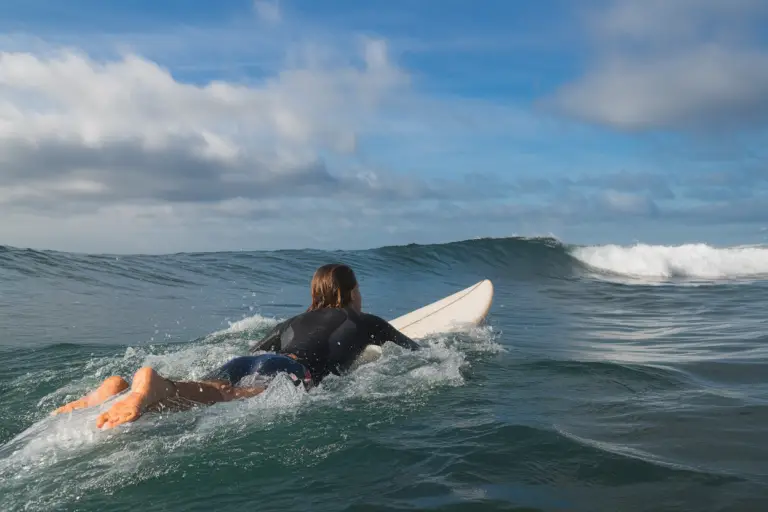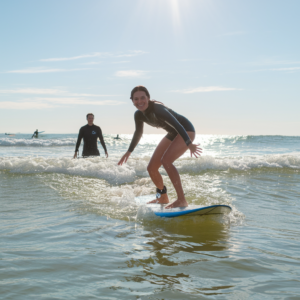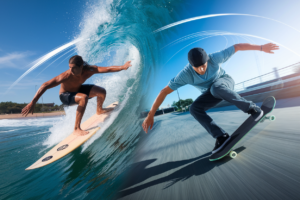Have you ever wondered if catching waves can actually help you shed those extra pounds? While surfing is undoubtedly a thrilling and enjoyable sport, it’s also a fantastic way to get a workout. But how effective is it when it comes to burning calories and boosting your fitness levels? In this article, we’ll dive into the calorie-burning potential of surfing and explore ten fitness tips to maximize your workout while riding the waves. Whether you’re a seasoned surfer or a newbie, you’ll discover how to make the most of your time in the water and turn your surf sessions into a calorie-burning, fitness-boosting experience.
The Caloric Conundrum of Surfing
Surfing isn’t just about riding the waves and feeling the rush of the ocean; it’s also a surprisingly effective way to torch calories and get your heart pumping. Let’s break it down.
Surfing’s Caloric Impact
When it comes to calorie expenditure, surfing stands out as a dynamic full-body workout. This is because surfing engages multiple muscle groups simultaneously, including your core, legs, and arms, all while requiring balance and coordination.
Here’s a breakdown of how surfing helps in calorie burning:
- Paddling: This action alone can burn a significant number of calories. It’s an aerobic exercise that uses your upper body and core, enhancing cardiovascular fitness.
- Standing Up and Balancing: Once you’re on the board, maintaining balance and maneuvering through wave’s demands strength and stability. This is where your core muscles come into play, contributing to calorie burn.
- Wave Riding: The act of riding a wave involves explosive power and quick reflexes, which can further elevate your heart rate and increase calorie expenditure.
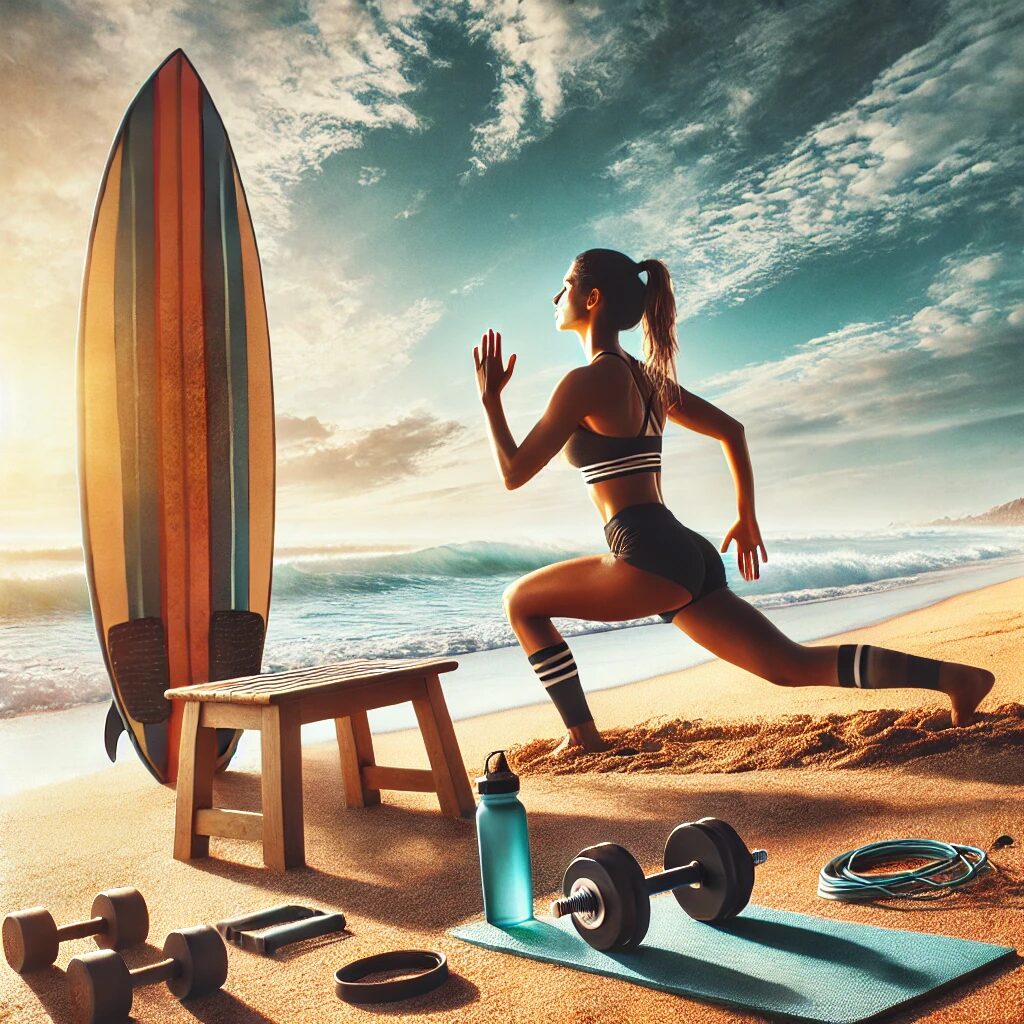
10 Fitness Tips to Amplify Your Surfing Workout
To make the most of your surfing sessions and enhance your fitness, consider incorporating these tips:
- Strengthen Your Core: A robust core is crucial for stability on the board. Engage in exercises like planks and Russian twists to build core strength.
- Improve Cardiovascular Endurance: Incorporate cardio workouts such as running or cycling into your routine to boost your overall endurance, making those long surf sessions feel easier.
- Practice Balance Drills: Use balance boards or yoga to refine your balance skills. This can help you stay upright on the board and reduce the risk of falls.
- Increase Flexibility: Stretching and flexibility exercises can enhance your range of motion, making it easier to maneuver and perform tricks.
- Enhance Paddling Power: Strengthen your upper body with exercises like push-ups and rowing. This will make paddling more efficient and less tiring.
- Hydrate and Fuel Up: Keep yourself hydrated and properly nourished before and after surfing to maintain energy levels and aid in recovery.
- Focus on Technique: Work on improving your surfing technique to make your movements more efficient and reduce unnecessary energy expenditure.
- Cross-Train: Engage in other forms of exercise to build overall fitness and prevent overuse injuries from repetitive surfing motions.
- Incorporate Interval Training: High-intensity interval training (HIIT) can mimic the bursts of activity during surfing and improve your cardiovascular and muscular endurance.
- Rest and Recover: Allow time for your body to recover between surf sessions.
Surfing Fitness Gear: What to Buy and Where to Find It
When it comes to amplifying your surfing workouts and maximizing calorie burn, having the right gear can make a world of difference. From balance boards to surf-specific exercise equipment, the market is brimming with options designed to enhance your performance and fitness. In this section, we’ll compare some of the top surf fitness gear and provide guidance on where to purchase them.
Key Fitness Gear for Surfers
- Balance Boards
- Purpose: Balance boards are fantastic for improving core strength and stability, crucial for maintaining equilibrium on your surfboard.
- Comparison:
| Brand | Features | Price Range |
| Indo Board | Adjustable difficulty, durable wood | $130 – $200 |
| Wobble Board | Lightweight, versatile | $50 – $100 |
| Revolution 101 | Premium build, non-slip surface | $150 – $250 |
- Resistance Bands
- Purpose: These are ideal for strength training, especially for paddling and leg strength.
- Comparison:
| Brand | Features | Price Range |
| TheraBand | Various resistance levels, portable | $10 – $30 |
| Fit Simplify | Color-coded, durable | $15 – $25 |
| Black Mountain | High-quality, versatile | $20 – $40 |
- Surf Skateboards
- Purpose: Surf skateboards mimic the surfing experience on land, helping improve your turning skills and overall surfing technique.
- Comparison:
| Brand | Features | Price Range |
| Carver Skateboards | Customizable trucks, smooth ride | $150 – $250 |
| SmoothStar | Dual-action trucks, enhanced maneuverability | $180 – $300 |
| YOW Surfskate | Adjustable, excellent for practicing surf moves | $200 – $350 |
- Foam Rollers
- Purpose: These help with muscle recovery and flexibility, which are essential for a surfer’s active lifestyle.
- Comparison:
| Brand | Features | Price Range |
| TriggerPoint | Grid pattern, durable | $30 – $60 |
| AmazonBasics | High-density foam, budget-friendly | $15 – $30 |
| RumbleRoller | Textured surface, deep tissue massage | $40 – $80 |
Where to Buy
- Online Retailers
- Amazon: Offers a wide range of surf fitness gear with customer reviews to help guide your purchase.
- Walmart: Provides affordable options, especially for beginners.
- eBay: Useful for finding second-hand gear or special deals.
- Specialty Surf Shops
- Surf Shops: Local surf shops often carry specific gear tailored for surfers and provide expert advice.
- Sports Stores: Many sports stores have sections dedicated to surfing and fitness equipment.
- Brand Websites
- Indo Board: Purchase directly from their website for a range of balance boards.
- TheraBand: Buy from the official TheraBand website or their authorized retailers.
- Carver Skateboards: Visit their site for exclusive surf skateboards and accessories.
- Fitness Equipment Stores
- Dick’s Sporting Goods: Offers a selection of fitness equipment, including resistance bands and foam rollers.
- REI: Known for high-quality gear, including balance boards and foam rollers.
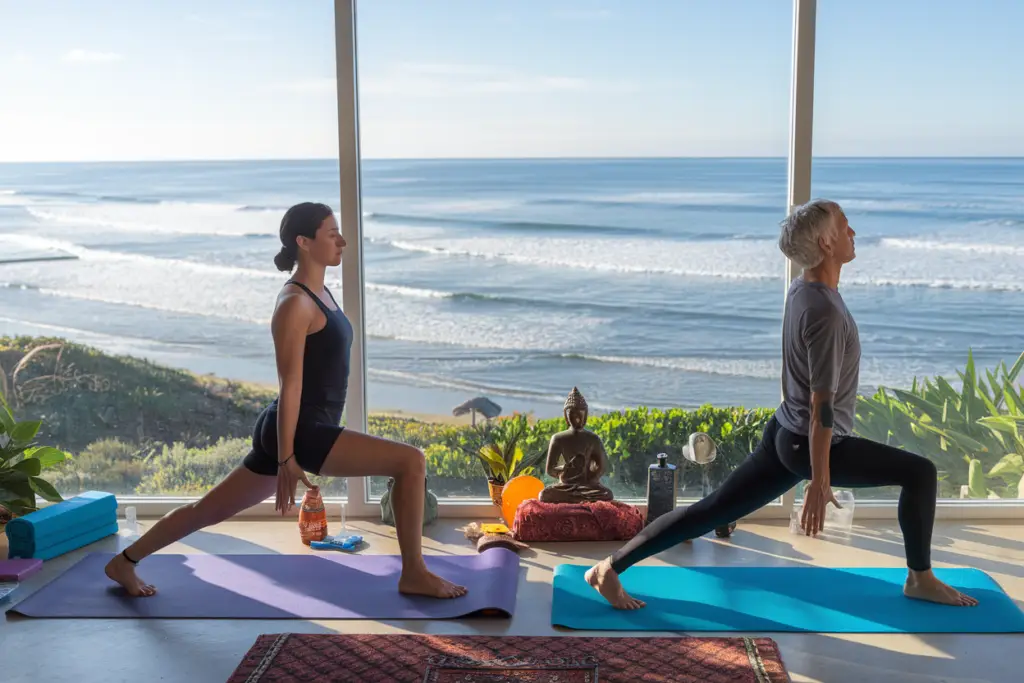
Frequently Asked Questions About Surfing and Calorie Burn
How many calories does surfing burn per hour?
The caloric expenditure associated with surfing exhibits considerable variability, influenced by factors such as body weight, surfing intensity, and ocean conditions. Generally, individuals can anticipate expending between 400 and 700 calories per hour of surfing. The primary activities contributing to this calorie burn include paddling, which engages your upper body and core, balancing on the board, and riding the waves, which requires explosive power and agility. The more intense and prolonged your surf session, the higher the calorie expenditure.
What muscles are most engaged while surfing?
Surfing provides a full-body workout, but certain muscle groups are particularly activated. The core muscles are crucial for balance and stability, helping you stay upright on the board. Your upper body, including the shoulders, back, and arms, is heavily engaged during paddling. Your legs and glutes come into play for maneuvering the board and maintaining your stance. The dynamic nature of surfing ensures that multiple muscle groups work together, providing a comprehensive workout.
Can beginners expect significant calorie burn from surfing?
Yes, even beginners can experience significant calorie burn while surfing. While you may not be riding waves as efficiently or aggressively as experienced surfers, the act of paddling, attempting to stand up, and balancing on the board still requires considerable physical effort. As you progress and improve your skills, the intensity of your workout—and thus the calorie burn—will naturally increase.
How can I increase the intensity of my surfing workouts?
To boost the intensity of your surfing workouts and maximize calorie burn, consider the following strategies:
- Intensify Paddling: Focus on powerful, continuous paddling. Incorporating interval training—short bursts of intense paddling followed by brief periods of rest—can elevate your workout.
- Improve Technique: Work on more advanced maneuvers and tricks. Aggressive turns, deep carves, and longer rides can increase the physical demand of your surf sessions.
- Add Surf-Specific Exercises: Complement your surfing with strength training and balance exercises on land, such as using balance boards or engaging in high-intensity interval training (HIIT).
How often should I surf to see fitness benefits?
For optimal fitness results, aim to surf at least 2-3 times per week. This frequency allows you to build endurance, strength, and overall cardiovascular health.
What are some effective exercises to do off the board to complement surfing?
Several off-board exercises can enhance your surfing performance:
- Core Strengthening: Core-strengthening exercises such as static planks, dynamic torso rotations like Russian twists, and explosive movements like medicine ball slams.
- Cardiovascular Training: Engaging in aerobic activities such as running, cycling, or swimming can significantly enhance cardiovascular endurance, thereby facilitating sustained exertion and prolonging surf sessions.
- Balance Training: Use balance boards or practice yoga to improve your stability and coordination, which are crucial for effective surfing.
Can surfing positively impact mental health?
Absolutely. Surfing offers profound mental health advantages. The synergistic interplay of physical exertion, immersion in nature, and the concentrated focus demanded by wave riding collectively attenuates stress and elevates mood. Many surfers attest to the rhythmic tranquility and challenging nature of the sport as catalysts for mental clarity and relaxation. Moreover, the endorphin release induced by exercise contributes to an overall sense of well-being, rendering surfing a holistic escape that nurtures both mind and body.
How can I prevent injuries while surfing?
- Warm Up Properly
- Use Proper Technique
- Stay Hydrated and Nourished
- Rest and Recover
Conclusion
Surfing is more than just a thrilling sport; it’s a powerful workout that can help you burn calories, build strength, and boost cardiovascular health. By understanding how surfing burns calories and incorporating fitness tips such as strengthening your core, improving cardiovascular endurance, and using balance boards, you can enhance the effectiveness of your surf sessions. Additionally, complementing your surfing with off-board exercises and proper recovery strategies will help you maximize the benefits and stay injury-free.
Remember, the beauty of surfing lies not only in the exhilarating experience of riding the waves but also in its potential to improve your overall fitness and well-being. With the right approach, you can turn every surf session into a rewarding workout that contributes to both your physical and mental health. So next time you hit the water, keep these insights in mind and make the most of your time in the surf.
For more interesting articles, check these out:
Is Surfing Hard? 11 Reasons Why
Surfing vs Snowboarding: Which Is Harder?
Surfing Weight Limits: How Heavy Can You Be and Still Surf?

